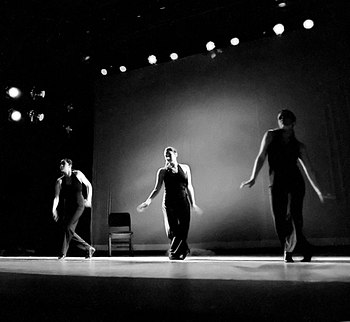The Art of Jazz dance is an amalgamation of different styles of dance that began between the 1800's, and the middle of the 1900's rooted in African American movement. One man known for this type of dance was the star of vaudeville Joe Frisco around 1910 who danced in an unrestrained fashion in close vicinity to the ground while tossing his cigar, and Derby in a juggling manner. The Jazz dance style up to the middle of 1950's was Tap dance which was always performed with Jazz music such as the Jitterbug, Swing, Boogie Woogie, Lindy Hop, and the Charleston. Katherine Dunham is renowned choreographer and dancer studied the cultural dances of Caribbean in Haiti, Jamaica, Trinidad, Tobago, Martinique and Shango making this African American dance a modern work of pure art.
She took this style to Hollywood and Broadway who embraced a more refined Jazz dance. Modern Jazz Dance is a smooth style of dance roots from Tap, Ballet and Jazz music which is performed in many musicals from the Pajama Game to Cabaret to Chicago to music videos and the Las Vegas showgirl performances. The usual technique for Jazz dance is that of a ballet dancer for balance and strength from doing slow movements. In contrast, the typical Jazz dance has sharp movements, but the skills of ballet smooth it down into a refined style.
Moreover, Jazz dance is such a versatile style that it can be combined with other dances from lyrical, contemporary and hip-hop. Jazz dance like Jazz music can be combined with other dance styles to enhance the dance to another level. For instance, The United Kingdom witnessed a new movement of dancers in the 1980's who danced when the Jazz and Funk music clubs was becoming unpopular known as Street Fusion Jazz Dance. Due to the new modern music scene, new groups who longed to keep the tradition of Jazz dance, and still leave room for the new styles.
There are two groups known for street fusion jazz dance known as IDJ ( I Dance Jazz), Brother in Jazz and Jazz Cotech. Famous people of the world of Jazz dance is Fred Astaire, Jerome Robbins, Jack Cole, and Bob Fosse. In the world of Jazz Dance, there are terms people use to describe various dance moves.
Jazz Dance Terms:
Adlib, Axel Turn, Ball Change, Barrel Jump, Barrel Turn, Bounce, Cake Walk, Catwalk, Catch Step, Chasse`, Coffee Grinder, Contract, Curve Or Arch, Dolphin, Drop and Recover, Fall, Fall Over The Log, Fan Kick, Figure 8, Flick, Flick Kick, Freeze, Funk, Head-Roll, Hinge, Hip Walk, Hip-Fall, Hip-Roll, Hitch Kick, Hop, Jazz Drag, Jazz Run, Jazz Split, Jazz Square, Jazz Walk, Jump Over The Log, Kick, Knee Fall, Knee Slide, Knee Turn, Lay Out, Limbo, Mess Around, Moonwalk, Pencil Turn, Pitch, Pivot Step, Primitive Squat, Release, Ripple, Shimmie, Shiver, Shoulder Fall, Shoulder Roll, Sissonne Fall, Skate, Snake, Snap, Spins, Spiral, Stag Leap, Step, Switch, Table Top, Tilt, Touch, Tripplettes, Turns, Twists, and the Worm.


